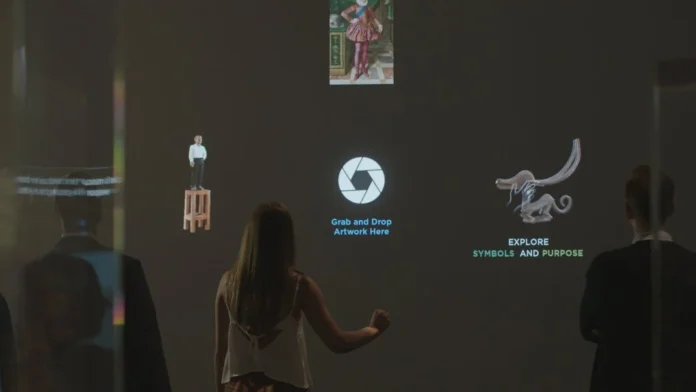Summary:
It wasn’t that it was the first museum to attempt to “go digital.” It was that the Cleveland Museum of Art did it in a meaningful way that went beyond augmented reality phone apps that, when you point your phone toward an object you like, superimpose an informative fact over the piece. CMA worked with creative firms, such as Design I/O, to create ARTLENS, a gallery that incorporates physical artwork with their digital representations in interactive, gesture-based games.
“We find that play is a very uninhibiting way to engage people to talk about art and learn about art,” says Lori Wienke, CMA’s associate director of interpretation and one of the creators of the ARTLENS gallery that debuted in September 2017.
Report an ad
Ninety percent of CMA’s collection is in storage or on loan at any given time; there simply isn’t the space to display it all at once. Museums typically have 10 times, or even 20 times, as many pieces as they have room to display, so the vast majority of the world’s art sits in storage and waits for rotation. Sometimes it takes years to bring a piece into the light. Evolving displays and scanners could let museums in the near-future share digital scans of art and share them with other museums simultaneously, so that a Picasso physically in Paris’ Louvre could be seen at the same time digitally in Philadelphia, Brisbane and Cape Town museums.
“What we’re trying to do with this current iteration is to shift people’s thinking about the idea of play, to take play seriously,” Wienke says. “The way the games are structured is to allow people to absorb information more intuitively, without being hit over the head that they’re learning something specific.” The 4,445 pieces of artwork currently on display throughout the museum also exist digitally within the ARTLENS app. A few light-sensitive pieces of art, kept in storage, are also featured. “Everything’s out there, but we don’t use technology for technology’s sake,” says Alexander. “It’s always about, ‘Is this a tool that should really be digital?” Sometimes an analog tool is going to be much more helpful to an audience.”
“It is vital that museums enter the digital age,” says Julian Spalding, an art critic and former director of Glasgow’s Kelvingrove Art Gallery and Museum. “If they don’t, they will become beached whales. There are, however, real challenges in introducing digital technology into museums.” He goes on to explain that “parceling up aesthetic experiences into manageable, teachable units, such as composition, gesture, emotion, purpose and symbolism, can fall short of the wholeness of impact that is the unique attribute of any great work of art—the kick in the stomach that takes you by surprise.”
Analysis:
The last time I went to the Cleveland Art Museum, I was amazed by the digital interactions they had within their exhibits. I thought this was relevant to my research around the relationship between a physical and digital space. The article points out that, “‘Everything’s out there, but we don’t use technology for technology sake,” says Alexander. ‘It’s always about, ‘is this a tool that should really be digital?’ Sometimes an analog tool is going to be much more helpful to an audience.” Understanding when to use a physical piece vs. a digital tool is important to put into consideration in a generation where technology is used for almost everything nowadays. Physical art can illicit a response that the digital world cannot, so utilizing that reaction when necessary is what can create something that stands apart from the rest. The Cleveland Art Museum also uses a lot of gesture-based technology, that encourages the user to move around the space as well as encourage them to “play.” ‘We find that play is very uninhibiting way to engage people to talk about art and learn about art.”
Source:
Magazine, S. (2018, February 5). The Cleveland Museum of Art Wants you to play with its art. Smithsonian.com. Retrieved September 22, 2022, from https://www.smithsonianmag.com/innovation/cleveland-museum-art-wants-you-to-play-with-its-art-180968007/




